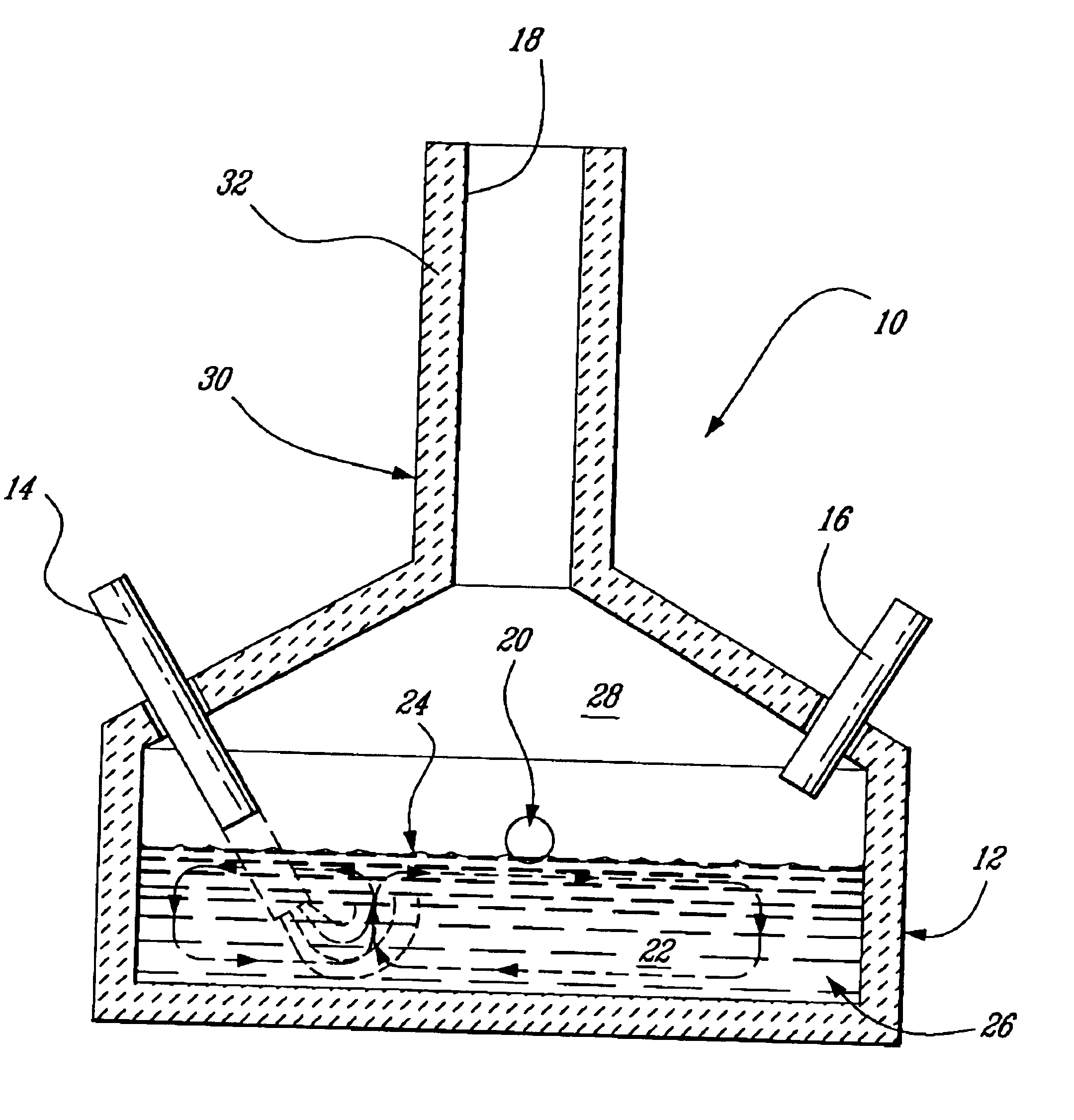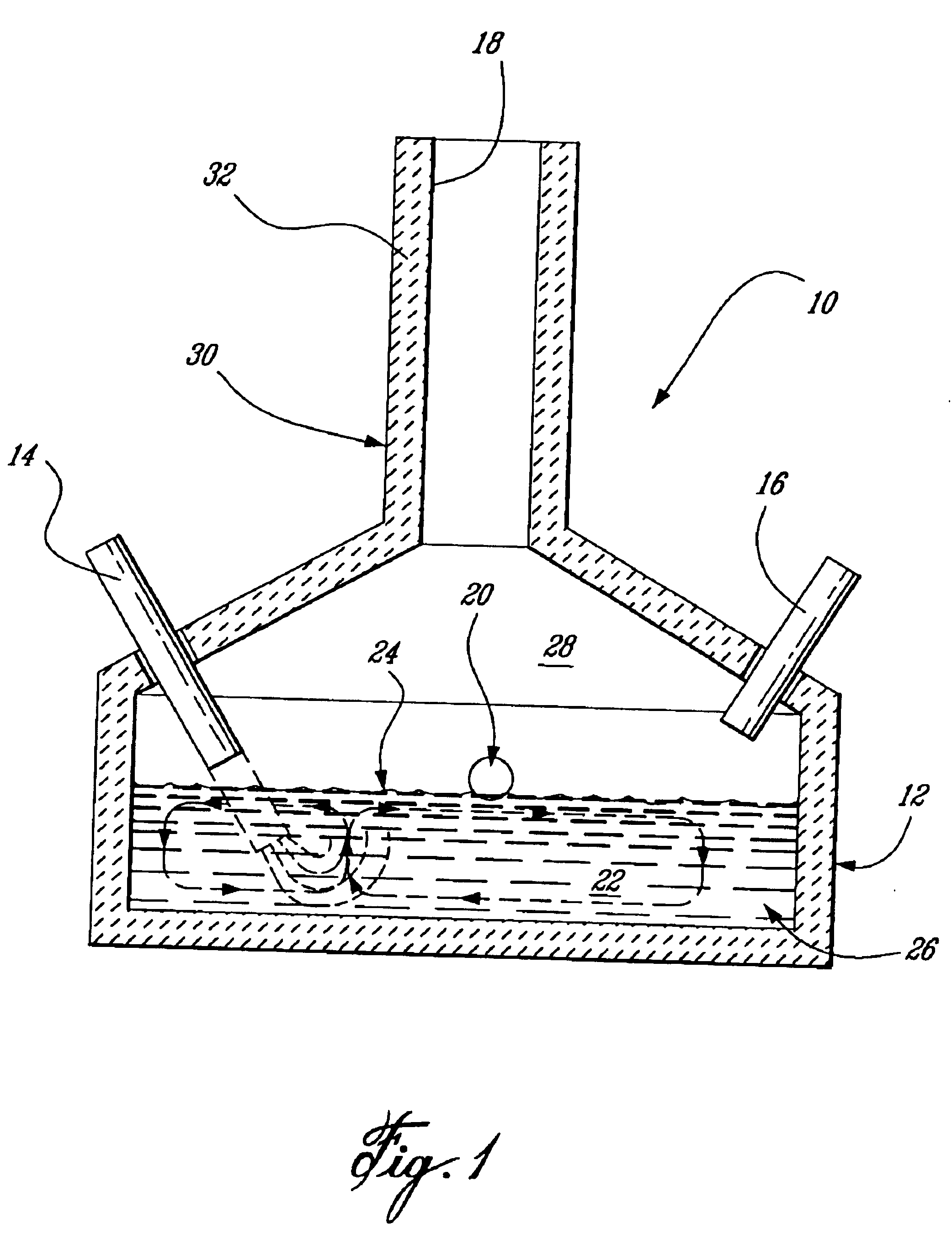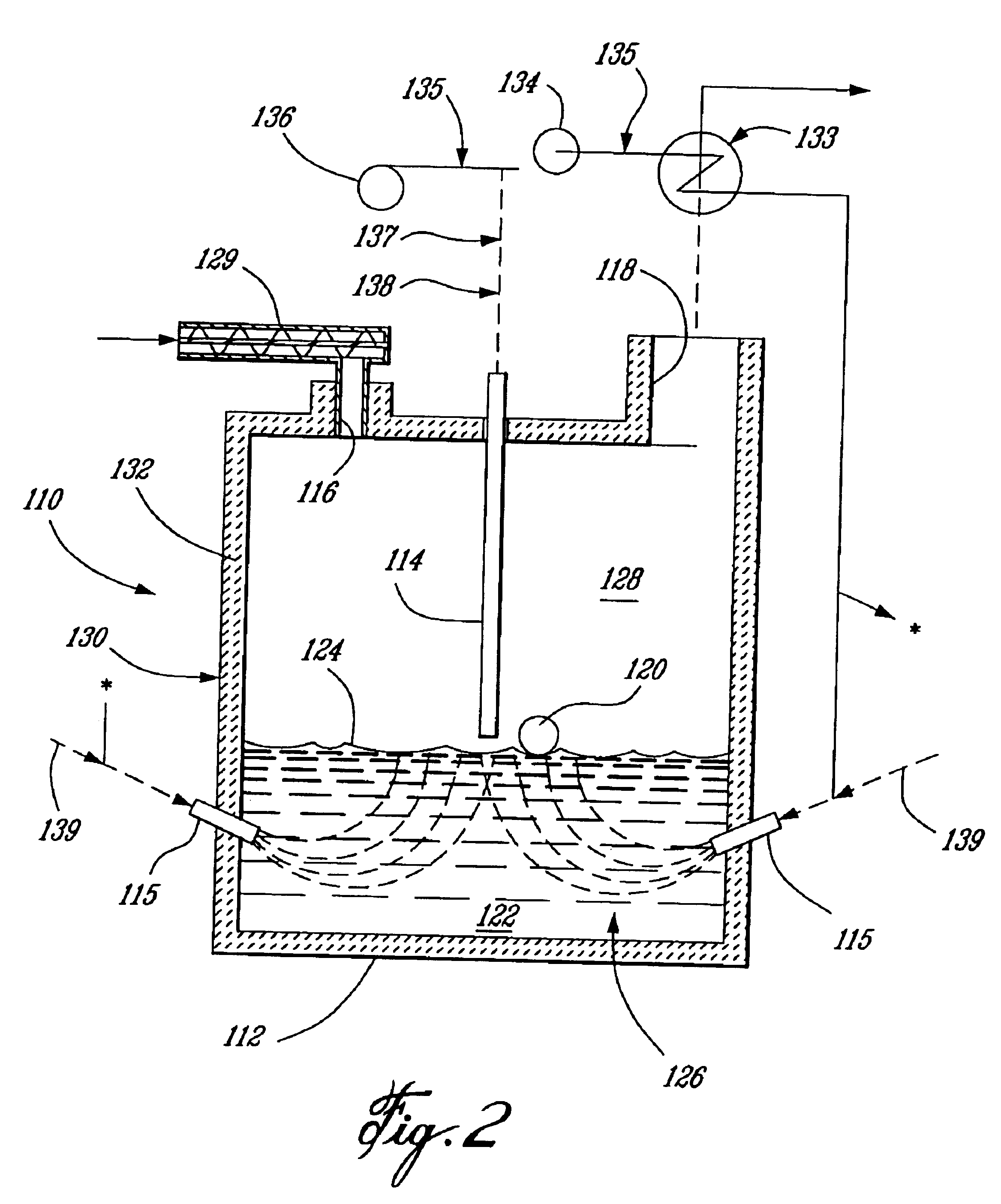Use of high carbon coal ash
a high-carbon coal ash and high-carbon technology, applied in the field of high-carbon coal ash, can solve the problems of limited use of coal ash in cements, limited use of inability to use coal ash of high-carbon content as supplementary cement materials,
- Summary
- Abstract
- Description
- Claims
- Application Information
AI Technical Summary
Benefits of technology
Problems solved by technology
Method used
Image
Examples
Embodiment Construction
The method of the invention produces a value product from inorganic materials including inorganic material which is a byproduct of industrial manufacture and which represents a disposal problem.
In particular, the method employs a coal ash having a high carbon content and which represents a significant disposal problem; and a source of lime. The source of lime is in particular cement kiln dust which is a byproduct of cement production, however, other sources of lime may be employed including limestone, calcined lime, dolomite, calcite or other forms of calcium carbonate and lime (quick lime) itself or calcium hydroxide (slaked lime) or combinations thereof.
The melt may be supplemented by auxiliary materials which introduce the elements Ca, Si and Al into the melt, for example, calcium silicate, calcium aluminate and calcium aluminosilicate, air cooled blast furnace slags and materials such as steel slags which introduce other elements such as Mg; further examples of auxiliary materia...
PUM
| Property | Measurement | Unit |
|---|---|---|
| temperature | aaaaa | aaaaa |
| molar ratio | aaaaa | aaaaa |
| temperature | aaaaa | aaaaa |
Abstract
Description
Claims
Application Information
 Login to View More
Login to View More - R&D
- Intellectual Property
- Life Sciences
- Materials
- Tech Scout
- Unparalleled Data Quality
- Higher Quality Content
- 60% Fewer Hallucinations
Browse by: Latest US Patents, China's latest patents, Technical Efficacy Thesaurus, Application Domain, Technology Topic, Popular Technical Reports.
© 2025 PatSnap. All rights reserved.Legal|Privacy policy|Modern Slavery Act Transparency Statement|Sitemap|About US| Contact US: help@patsnap.com



